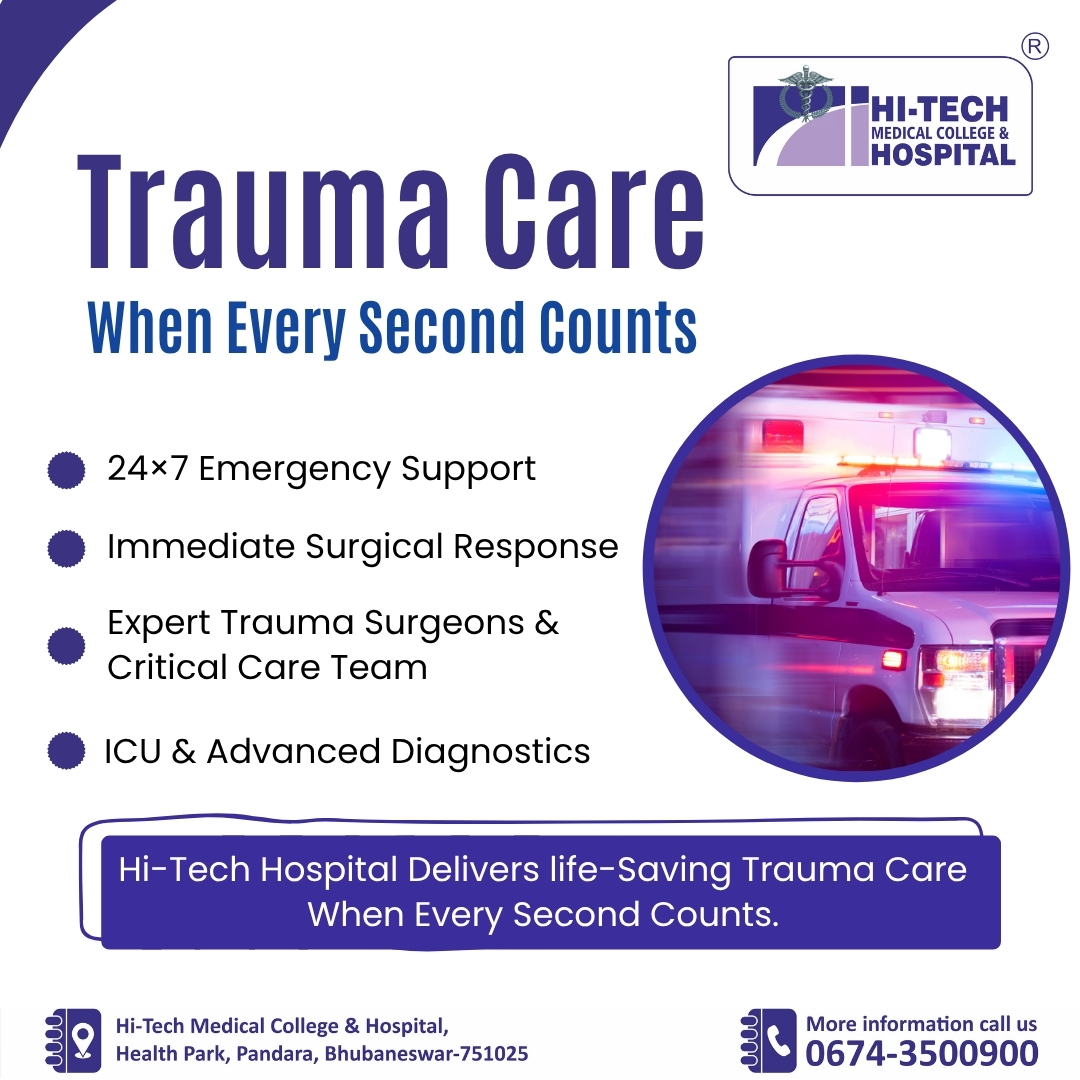Emergencies can strike when we least expect them. Whether it’s a road accident, a fall, a severe burn, or any sudden injury, immediate medical attention is crucial. This is where trauma care comes in. Trauma care refers to the specialized medical attention given to people who have suffered severe injuries that are potentially life-threatening. In this guide, we will break down everything patients and families should know about trauma care, especially before an emergency ever arises.
1. What Is Trauma Care?
Trauma care is a branch of emergency medicine focused on treating injuries caused by external force. These injuries can result from accidents, violence, falls, or natural disasters. The goal of trauma care is to stabilize the patient, prevent complications, and improve chances of recovery.
Trauma care is often delivered in a specialized unit called a trauma center, where trained professionals—including trauma surgeons, emergency physicians, and nurses—work around the clock to manage critical injuries.
2. When Is Trauma Treatment Needed?
Trauma care is required when a person suffers:
- Road traffic accidents
- Head injuries or brain trauma
- Falls from a height
- Severe burns
- Gunshot or stab wounds
- Crush injuries
- Industrial or workplace accidents
If the injury is sudden, serious, and requires immediate attention, it likely falls under the category of trauma care.
3. Levels of Trauma Centers
Hospitals are classified by levels of trauma care based on their ability to treat complex injuries:
- Level I: Offers the highest level of surgical care with 24/7 availability of specialists, ICU, advanced diagnostics, and rehabilitation.
- Level II: Provides comprehensive trauma care but may refer complex cases to Level I centers.
- Level III: Offers prompt assessment, surgery, and stabilization with transfer protocols for more severe cases.
- Level IV & V: Typically found in rural areas; they provide initial care and transfer patients to higher-level centers.
Hi-Tech Medical College & Hospital is equipped with emergency care services that ensure timely response to critical cases, reflecting a high level of trauma capability.
Health Advisory Disclaimer
This blog is for informational purposes only and does not constitute medical advice. For any health concerns, symptoms, or before starting any treatment, please consult a licensed medical professional or visit a registered hospital. Always seek guidance from qualified healthcare providers for accurate diagnosis and care.
4. What Happens During Trauma Treatment?
When a patient arrives at a trauma center, care typically follows this process:
A. Triage
Patients are assessed quickly to prioritize based on the severity of their condition.
B. Primary Survey
Doctors check airway, breathing, circulation, disability (neurological status), and exposure (to find hidden injuries).
C. Stabilization
Vital functions are supported. Bleeding is controlled, breathing is stabilized, and fractures may be temporarily immobilized.
D. Diagnostic Testing
CT scans, X-rays, MRIs, and blood tests help identify internal injuries.
E. Emergency Surgery (If Needed)
If internal bleeding or organ damage is found, the patient may be taken for emergency surgery.
F. Intensive Care Unit (ICU)
Critically injured patients are moved to the ICU for continuous monitoring and treatment.
G. Recovery and Rehabilitation
Once stable, patients undergo physical therapy, counseling, or long-term care depending on the injury.
5. Key Members of a Trauma Team
- Trauma Surgeon: Specializes in operating on life-threatening injuries.
- Emergency Physician: First point of contact who stabilizes the patient.
- Anesthesiologist: Provides pain relief and supports surgery.
- Radiologist: Reads imaging scans to detect injuries.
- Nurses & Paramedics: Monitor vitals and assist in care.
- Rehabilitation Specialists: Help patients regain physical function post-injury.
6. Why Time Is Critical in Trauma Care Cases
The first “golden hour” after trauma is crucial. Quick intervention within 60 minutes can make the difference between life and death. Knowing where your nearest trauma care center is—and how to get there—can save valuable time.
Keep emergency numbers handy and be aware of nearby hospitals like Hi-Tech Hospital that are equipped to handle trauma emergencies 24/7.
7. How Families Can Support During Trauma Care
- Stay calm and cooperative with medical staff.
- Provide accurate medical history if the patient is unconscious.
- Stay informed by asking questions about the condition and treatment.
- Follow hospital protocols to avoid delays in care.
- Plan for post-discharge care including therapy, medications, or counseling.
8. Preventing Traumatic Injuries
While trauma care saves lives, prevention is always better. Here’s how you can stay safe:
- Always wear seat belts and helmets.
- Install handrails and anti-slip mats in bathrooms.
- Keep emergency contact info accessible.
- Follow safety protocols at work and home.
- Stay updated with first aid and CPR training.
9. Why Choose Hi-Tech Hospital for Trauma Care?
Hi-Tech Hospital is a well-equipped facility with:
- 24×7 trauma and emergency services
- A team of specialized trauma surgeons and ICU staff
- Advanced diagnostic tools
- On-site operation theatres
- Quick ambulance support
It serves as a vital trauma care provider in Odisha, delivering high-quality care with compassion.
Final Thoughts
Trauma care isn’t just a medical service—it’s a lifeline during the most critical moments. Understanding what trauma care is, when to seek it, and how it works can help you respond confidently in emergencies.
Stay informed, stay prepared, and always know your nearest trauma care facility. It might just save a life.
Need help in an emergency? Contact Hi-Tech Medical College & Hospital’s 24×7 Trauma Unit immediately.

